
8 minute read
Discover Your Digital Path
Next, she works with the students on inference and hypothesis. After reading
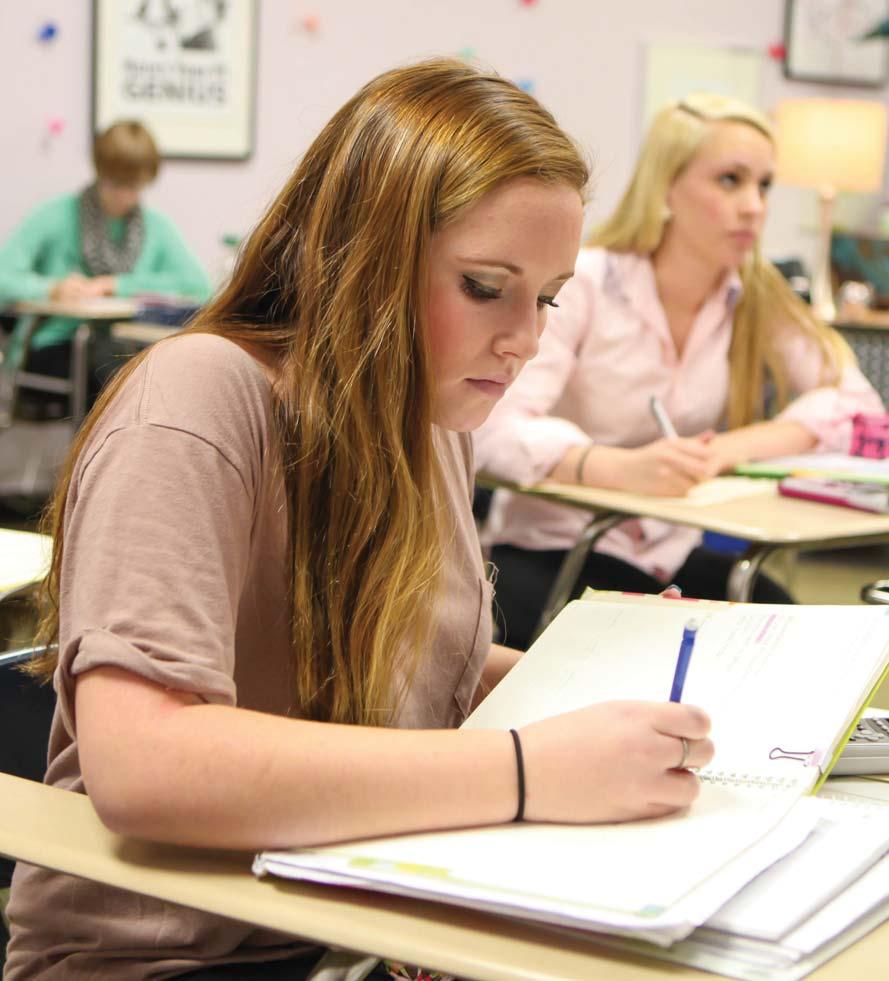
Advertisement
that these exercises have led to a better understanding of the material.”
Morris’s Honors Pre-Calculus class has been asked to do a “brain-dump” in the form of a diagram for a couple of major concepts this year. The idea is that the students organize the material into some sort of flowchart, tree diagram, or cluster diagram. The students must be able to generalize the problems and write out directions on which path to take depending on outcomes and analysis of the problem involved. “I have called this a “brain-dump” because they are writing everything they know about the process of getting through a problem,” said Morris. “The finished product should enable someone who has not been through the classroom instruction to be able to get to the bottom line of a problem successfully.”
Librarian Lee Sprague has been working with the English department to support research and offer new ways to approach the research writing process. “Students are no longer writing a research paper and calling it done,” said Sprague. “I wanted to change the focus from writing research papers to boosting critical thinking skills.”
Instead of assigning a research paper, Sprague works first on developing problem solving skills, helping the students to think more broadly. Then, she works with the students to apply this thinking to characters in literature through written assignments. For example she might have them write a play where a character has to solve a problem or write a letter to a character offering advice and critiquing the way a character solved a problem. “While they did this, they were also writing down their thinking process,” said Sprague.
and studying an author’s writing style, students make inferences about what the writer’s life might have been like. They then research the author’s actual life and write reflections about how closely their inferences matched what they found. Sprague expands on this and incorporates blogging to make their writing more public.
“What we’re doing here isn’t just about English,” said Sprague. “We’re helping the students think about what is going on in their brains,” she said. “Using writing for reflection is tremendously powerful and it’s allowed us to see that the less vocal students are really getting it. Sometimes the inquiry is much
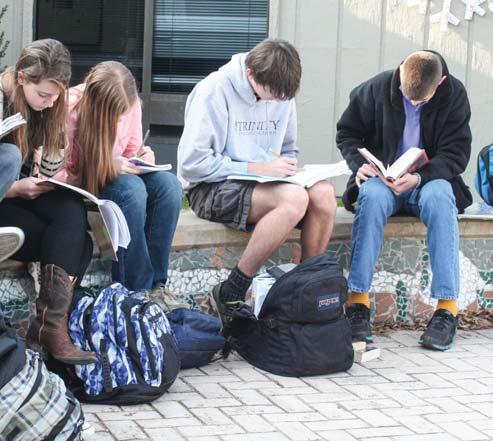
summaries, new endings, and/or diary entries or blogs from the point of view of characters. “The students find this method fun and they are often surprised at how many words they can produce,” said Mercer. “Some Spanish II Honors students can easily crank out 350+ words in a composition without the use of any resources."
In the music studio, band director and music teacher Brian Rollins has students using writing to respond to music analysis. A sound clip of a musical piece is emailed to the students and they
deeper than you would ever know through just speech.”
English teachers Allison Marchetti and Rebekah O’Dell have made the focus in their classes primarily on writing, using weekly mentor texts to show the students what works and how to use it in their own writing. “They are writing all the time,” said Marchetti. “The students understand that this is what we do.” And it’s not just the students that are writing. Marchetti and O’Dell have their own blog, movingwriters.org, through which they examine and reflect on how to move student writers forward in their craft. Their motto: “Move the writing. Move the writer.”
Spanish teacher Chris Mercer has incorporated a method of language instruction called Total Proficiency through Reading and Storytelling (TPRS) to help students improve their writing. The method emphasizes learning grammatical structures within the context of highly engaging stories and short novels. Students are required to interact with the stories by writing describe their observations in writing. “At the start of the process, we largely focus on extracting the significant aspects from the clip, so bullet points and lists are fine,” said Rollins. “From there we look at how the information in those formats can be put into a more standard essay.”
In the history classroom, teacher Bob Patterson ’83 created a critical thinking, analysis/synthesis and evaluation unit for essay writing. “I provide the students with the necessary scaffolding and support so they better understand when they are thinking critically and proving a thesis.” They receive checklists for thesis development, examples of funnel paragraphs, introductions and then main body organizational formats, examples of how to deconstruct and directly answer the question asked, and critical thinking exercises. They receive feedback during all the steps of drafting and then they redo the draft.
In the art studio, drawing and painting teacher Meredith Turner has her International Baccalaureate (IB) students
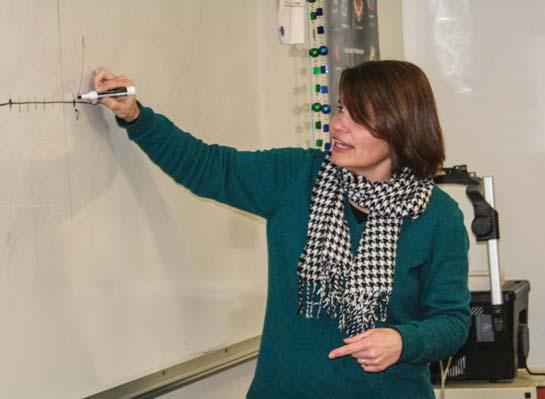
Sophia Murray ‘15 Ms. Caldwell’s 9th grade English class during a writing workshop Math Teacher Charlotte Morris
work in groups of three critiquing one another’s work. One person takes notes on comments the other’s make about their work, as though they are listening to people talk about work in a gallery. After taking notes, the students reflect on the feedback they received. Ceramics and design fundamentals teacher Amy Baynum Chaplin ’88 has been working with her IB students on writing artist statements. “We have done verbal practice, written quick responses, and viewing the piece as evolving,” said Chaplin. “In design fundamentals, we are always working on writing art criticisms, but, I use quick writing exercises to review material, assess the students’ understanding, and remind them that they know more than they think they do.” Photography teacher Allison Fiebert has her students use quick writes and reflective writing to brainstorm and to record their thoughts on processes and techniques learned in class. In Meg Murtagh’s design fundamentals class, she is collaborating with English teacher Allison Marchetti who is assisting Murtagh’s class in reflecting on art through creative writing.
Though each department has a different approach to the application of writing, what is clear is that across the board, students are writing more, and the more they write the more they seem to like it. As one student said, “I feel that I have grown significantly as a writer and I can’t wait to continue.” “I think writing workshop has inspired me to write more. At first it seemed frustrating, but now I am excited.”
Trinity has become a haven for digital natives. With the inception of the Creative Exploration Studio in the Powell Library, which houses the MakerBot (a 3D printer) and Ouya (a video game console) and the addition of iPads and other technology to the library and classrooms, students born in the digital age feel right at home. The Creative Exploration Studio was started late last year with the generous donation of the MakerBot by Trinity parents Susan and Richard Hankins and guidance of Trinty’s IT Support Assistant Jose Santiago, and expanded this year to include video games and video. In addition, the school has acquired 30 iPads, more than 30 laptops and a number of BrightLink overhead projectors in the classrooms.
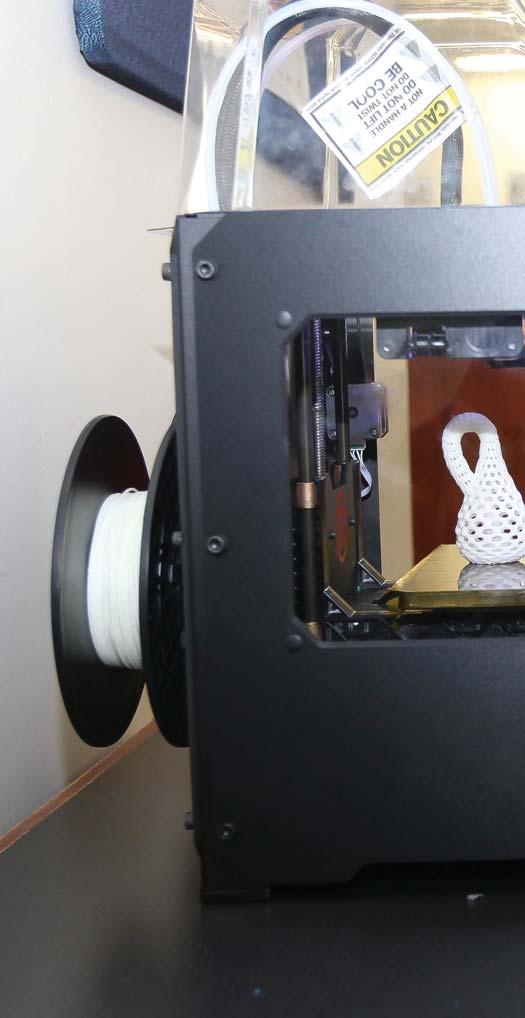
Students have quickly been drawn to the newest technology and even started a 3D printer club. Club Sponsor and Librarian Sarah Greenlee said students approached her with the idea and it has taken on a life of its own. Students have created everything from cell phone cases to an infinity bottle and a Mobius belt. “The exciting thing is to see it take off,” said Librarian Lee Sprague who has seen Trinity’s transformation over the years into a more digitally advanced community. “When we got iPads, initially, the interest wasn’t there. But this year there’s been a change,” she said. “We’re seeing a shift to a more mobile/collaborative atmosphere. Instead of sitting in the computer lab, they prefer to be with a laptop or iPad.”
Santiago maintains that letting student preference drive technology development and acquisition is the best approach for a community like Trinity. “We take an idea from students and teachers and set up prototypes and if we like it we find ways to support it,” said Santiago. “We let things grow organically. It creates a slightly messier environment, but I think it’s the most
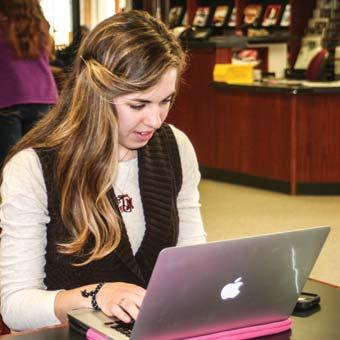
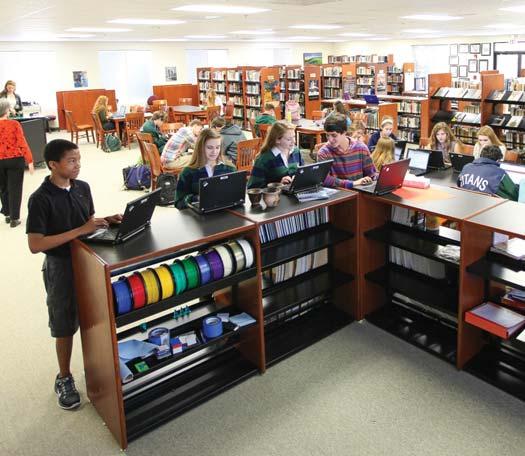
Left to right:
Madison Trebour ‘15 works on her laptop. Miranda Stinson ’15 with the MakerBot (a 3D printer). Students work at the Creative Exploration Studio in Powell Library. Librarians Lee Sprague and Sarah Greenlee showing off an iPad. Librarian Lee Sprague assists William Baxter ‘15 and Patrick Groh ‘15 with technology.

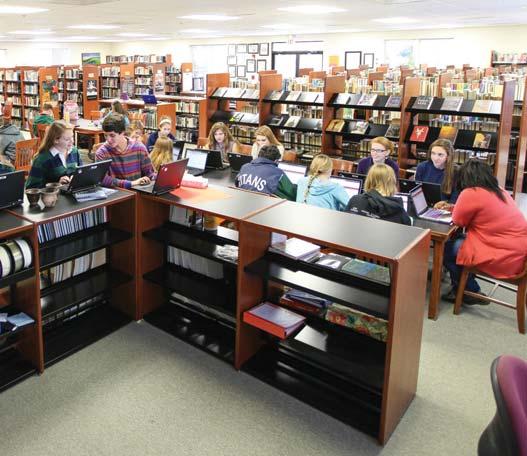
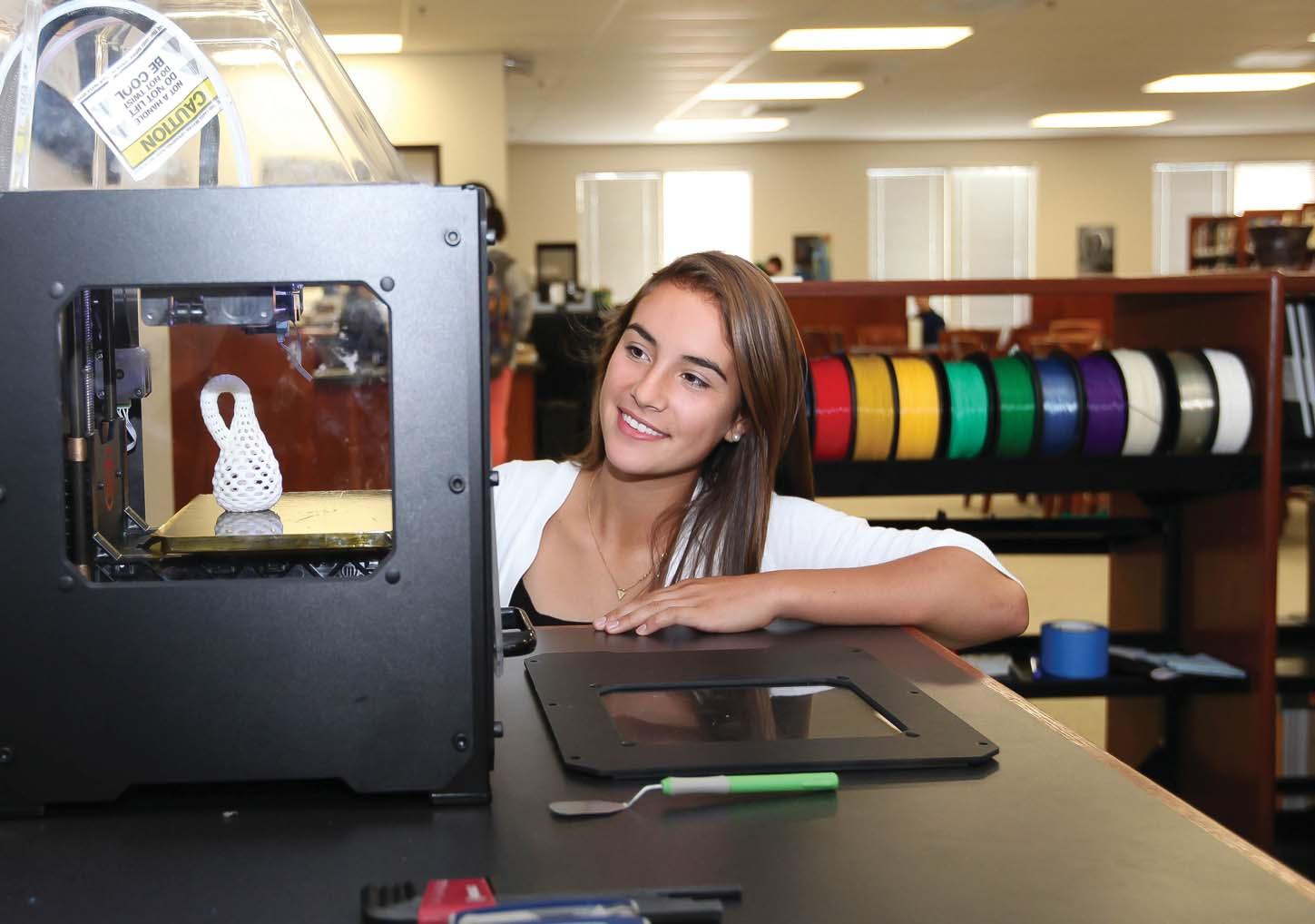
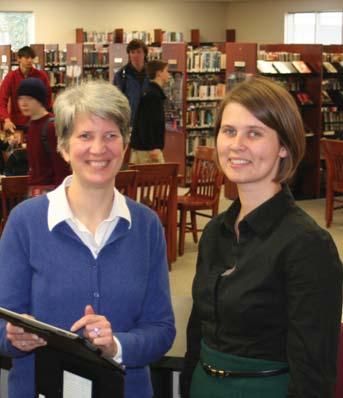
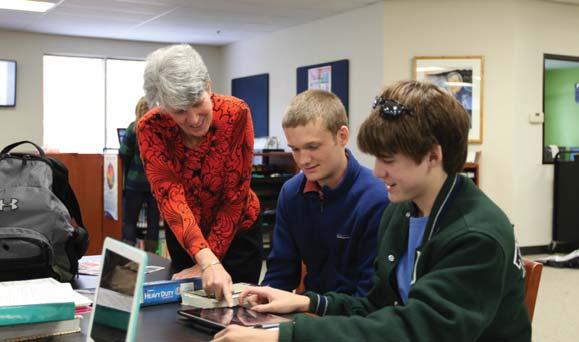
productive and creative way to use technology,” he said. “We’re finding our own technology path.”
“Long-term, we hope to make technology an integral part of the curriculum,” said Santiago, “making technology-specific courses for things like programming, animation, video game creation, 3D printing, and video and sound creation.”









